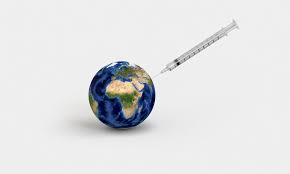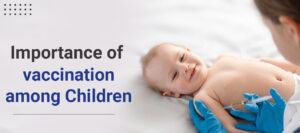Vaccination programs have had a profound impact on global health, significantly reducing the burden of infectious diseases and improving life expectancy, particularly for newborns and young children. This section explores the far-reaching effects of these programs, highlighting their successes, challenges, and ongoing efforts to protect the most vulnerable populations.

Reduction in Infant and Child Mortality
- Decreased Mortality Rates: Vaccination programs have led to substantial declines in infant and child mortality rates worldwide. Diseases that once claimed millions of young lives, such as measles, polio, and diphtheria, are now preventable through routine immunization.
- Impact on Specific Diseases: For instance, the global incidence of measles has decreased by over 80% since 2000, thanks to widespread vaccination efforts. Similarly, the introduction of the rotavirus vaccine has significantly reduced deaths from severe diarrhea in infants and young children.
Eradication and Control of Diseases
- Smallpox Eradication: The successful eradication of smallpox in 1980 stands as one of the greatest achievements in public health. Intensive vaccination campaigns coordinated by the World Health Organization (WHO) played a crucial role in eliminating this deadly disease.
- Polio Eradication Efforts: Polio cases have decreased by over 99% since the launch of the Global Polio Eradication Initiative in 1988. Many regions are now polio-free, with efforts continuing to eliminate the disease entirely.
- Control of Other Diseases: Vaccination programs have also controlled other significant diseases like diphtheria, pertussis, and tetanus, drastically reducing their incidence and associated mortality.
Promotion of Herd Immunity
- Community Protection: Vaccination programs not only protect vaccinated individuals but also contribute to herd immunity, reducing the spread of infectious diseases within communities. This protection is crucial for those who cannot be vaccinated, such as newborns with medical conditions or compromised immune systems.
- Outbreak Prevention: High vaccination coverage prevents outbreaks and epidemics, maintaining public health and safety. For example, high immunization rates have kept diseases like measles and rubella at bay in many parts of the world.
Economic Benefits
- Cost-Effectiveness: Vaccination is one of the most cost-effective health interventions. It reduces the need for medical treatments, hospitalizations, and long-term care, resulting in substantial economic savings for families and healthcare systems.
- Economic Productivity: Healthier populations are more productive. By preventing debilitating diseases, vaccination programs contribute to a stronger workforce and improved economic stability in communities and nations.
Advancements in Vaccine Technology
- Innovation and Research: Continuous advancements in vaccine technology have led to the development of safer and more effective vaccines. Innovations such as mRNA vaccines, which have been pivotal in the COVID-19 pandemic, demonstrate the potential for rapid response to emerging infectious threats.
- Improved Delivery Systems: New delivery methods, such as needle-free injectors and thermostable vaccines, are making vaccination more accessible, particularly in remote and resource-limited settings.
Addressing Global Health Disparities
- Equitable Access: International organizations, governments, and non-profits work together to ensure equitable access to vaccines for all children, regardless of socioeconomic status or geographic location. Programs like Gavi, the Vaccine Alliance, have immunized millions of children in low-income countries.
- Targeted Campaigns: Special vaccination campaigns target regions with low coverage rates, aiming to close immunization gaps and protect vulnerable populations. For example, the Measles & Rubella Initiative focuses on reaching children in high-risk areas.
Challenges and Future Directions
- Vaccine Hesitancy: Misinformation and vaccine hesitancy pose significant challenges to vaccination programs. Public health campaigns focus on educating communities and addressing concerns to improve vaccine acceptance.
- Sustaining Immunization Coverage: Maintaining high immunization coverage requires continuous efforts, including robust healthcare infrastructure, trained healthcare workers, and sufficient vaccine supplies.
- Emerging Diseases: Ongoing research and development are essential to address emerging infectious diseases and adapt existing vaccines to new strains or variants.
The Main Existing Global Vaccination Programs
Global vaccination programs are critical in controlling and eradicating infectious diseases. These programs are coordinated by various international organizations, national governments, and non-governmental organizations (NGOs) to ensure that vaccines reach populations worldwide, especially in low- and middle-income countries. Here are some key global vaccination programs:
The Expanded Programme on Immunization (EPI) by WHO
- Objective: To ensure that all children have access to routinely recommended vaccines.
- Key Vaccines: BCG (for tuberculosis), polio (OPV/IPV), diphtheria, tetanus, pertussis (DTP), measles, and hepatitis B.
- Impact: The EPI has significantly reduced the incidence of vaccine-preventable diseases and has helped eradicate smallpox and control polio in many regions.
- Source: World Health Organization (WHO)
Gavi, the Vaccine Alliance
- Objective: To improve access to new and underused vaccines for children living in the world’s poorest countries.
- Key Vaccines: Pneumococcal, rotavirus, HPV, yellow fever, Japanese encephalitis, and others.
- Impact: Since its inception in 2000, Gavi has immunized over 822 million children, preventing more than 14 million deaths.
- Source: Gavi, the Vaccine Alliance
The Global Polio Eradication Initiative (GPEI)
- Objective: To eradicate polio worldwide.
- Key Vaccines: Oral Polio Vaccine (OPV) and Inactivated Polio Vaccine (IPV).
- Impact: Polio cases have decreased by over 99% since GPEI’s launch in 1988. The initiative is a public-private partnership that includes WHO, Rotary International, the CDC, UNICEF, and the Bill & Melinda Gates Foundation.
- Source: Global Polio Eradication Initiative (GPEI)
Measles & Rubella Initiative
- Objective: To eliminate measles and rubella worldwide.
- Key Vaccines: Measles, Mumps, and Rubella (MMR) vaccine.
- Impact: The initiative has vaccinated over 2.9 billion children since 2000, preventing more than 21 million deaths from measles.
- Source: Measles & Rubella Initiative
The Maternal and Neonatal Tetanus Elimination Initiative
- Objective: To eliminate maternal and neonatal tetanus.
- Key Vaccines: Tetanus toxoid vaccines.
- Impact: The initiative has made significant progress, reducing the number of newborns dying from neonatal tetanus by 96% between 1988 and 2020.
- Source: UNICEF
The Coalition for Epidemic Preparedness Innovations (CEPI)
- Objective: To develop vaccines against emerging infectious diseases.
- Key Vaccines: Vaccines for diseases like COVID-19, Lassa fever, Middle East Respiratory Syndrome (MERS), Nipah virus, and others.
- Impact: CEPI has been instrumental in the rapid development and distribution of COVID-19 vaccines.
- Source: CEPI
About Introduction to Neonatal Vaccination,you would like to know…






